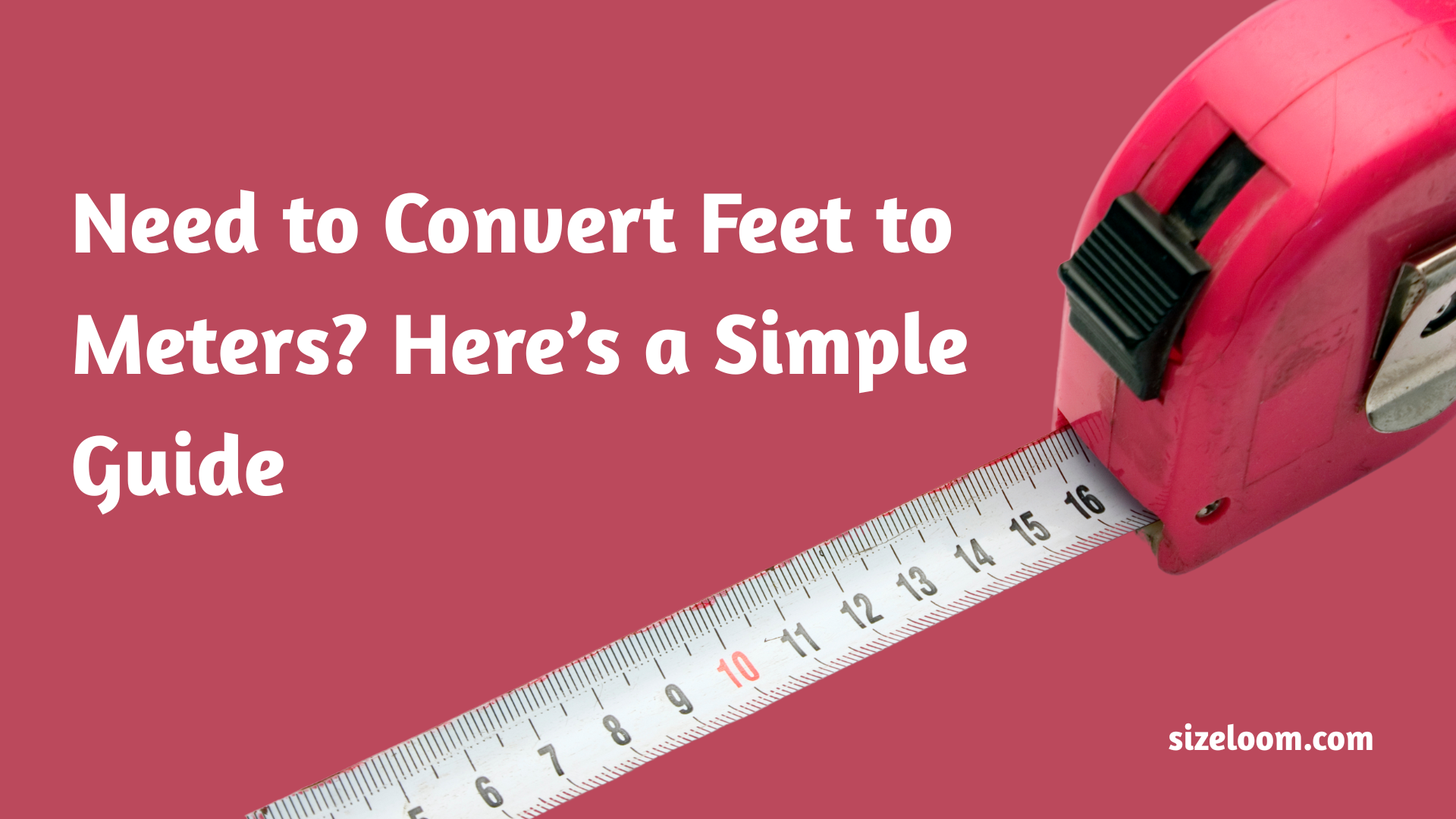Let’s face it—unit conversions can feel like trying to read a foreign language. One minute you’re staring at a number in feet, and the next, someone wants it in meters. Confusing? Not if you know the relationship between the two. Feet and meters are both units of length, but they belong to different measurement systems. The foot is part of the imperial measurement system (more precisely, the U.S. customary system), commonly used in the United States. On the other hand, the meter is the base unit of length in the metric system, which is widely used around the world. So, if you’re dealing with international clients or construction projects with buyers overseas, you’ll likely need to switch between these two systems.
Understanding this relationship is crucial for anyone working with everyday measurements, scientific calculations, or even fly calculations in aviation. The good news? It’s all anchored by a globally accepted conversion factor.
How to Convert Feet to Meters?
Here’s the thing: converting feet into meters doesn’t require a math degree or a fancy calculator. It just takes a reliable conversion formula and a little attention to detail. Whether you’re doing manual calculations or using a conversion calculator, the process is more or less the same.
To get started, identify the number of feet you want to convert. This might be a measurement in feet from a blueprint, a foot measurement from a clothing pattern, or even feet measurement in sports field dimensions. Then, use the simple conversion formula (we’ll get to that in the next section) to find the answer in meters.
Of course, for quick conversion, you can use metric conversion tools or a conversion table. These are especially helpful for small-scale conversions where precise measurements are critical. If you’re working with complex measurements or need exact conversion values, digital tools can reduce the risk of calculation errors.
Formula for Converting Feet to Meters
Here’s where it gets easy.
To convert feet to meters, multiply the number of feet by the conversion factor: 1 foot = 0.3048 meters. That’s the exact conversion factor recognized internationally.
The formula is:
Meters = Feet × 0.3048
Say you have a room that measures 10 feet in length. Just apply the unit-conversion equation:
10 feet × 0.3048 = 3.048 meters
There’s your approximate answer—a little over three meters. If you’re dealing with precise conversions, it helps to round off to three decimal places unless your project requires even more accuracy. Remember, this isn’t just for one-time calculations. It comes in handy in commonly-known conversions across construction, design, and international shipping.
Difference between Feet and Meter

At first glance, both feet and meters just measure length, right? True, but the differences go beyond just the numbers. A foot is defined as 12 inches and is commonly used in the United States for everything from measuring human height to real estate. One foot equals exactly 0.3048 meters, as standardized internationally. Meters, being part of the metric system, are used in most countries for nearly all measurements, including scientific and industrial standards.
This variation in units of measurement often causes hiccups when dealing with measurements in countries that use different systems of measurement. While one engineer may talk in feet, another might prefer meters. That’s why unit conversions are a critical skill in global industries. Feet measurements are generally more familiar in everyday American life. Meanwhile, the metric measurement system (with its decimal-based structure) allows for more straightforward calculations. That’s why many professionals prefer it for scientific calculations, even in countries that primarily use imperial measurements.
Explore More: Grams to Pounds Made Easy: A Quick, No-Fuss Guide
Practical Applications for Feet to Meters Conversion
You use feet-to-meters conversion more often than you’d think. In construction, especially with international buyers, you’ll switch between imperial and metric constantly. Blueprints may be in feet, but clients want meters. The same goes for interior design, landscaping, and real estate listings aimed at a global market. In schools and labs, students and researchers translate units for projects, papers, or teamwork across borders. Even travelers need quick conversions—to read signs, maps, or hiking distances abroad.
Sports? Same story. Tracks are in meters. Gyms? Often in feet. Aviation flips between both all the time to match international standards. Wherever you’re working—on a build site, in a classroom, or on a runway—knowing how to convert units saves time and avoids costly mistakes. One wrong decimal can wreck a wall or botch an experiment.
So keep it simple. Use an app. Memorize the factor: 0.3048. That’s it. One number. One key. If you’re old-school, carry a conversion chart. Still works. Bottom line: converting feet to meters isn’t hard. Learn the formula. Use the right tool. Do the math. Get it right. And soon, you might start thinking in meters without even trying.
Size Right Every Time — Follow the SizeLoom Fit Guide.


